Abstract
In a prospective regional survey of neonatal hepatitis syndrome 32 infants had extrahepatic biliary atresia (EHBA) and 103 had hepatitis. No cause for the lesion was found in infants with extrahepatic biliary atresia, but in 32 with hepatitis a specific cause was identified, 24 having genetic deficiency of the serum protein alpha1-antitrypsin. No differences were observed in parental age, mother's health in pregnancy, month of birth, birth order, or sex of the infants. Familial idiopathic hepatitis occurred in 3 of 67 sibs of patients with idiopathic hepatitis, but the 33 sibs of EHBA patients had no liver disease. Of the infants with hepatitis, 36 were of low birthweight, less than 2.5 kg, and 23 were born prematurely. Infants with biliary atresia were all of normal birthweight and only one was born prematurely. Consideration of clinical and biochemical abnormalities in the first 2 months of life showed no differences between the two groups except that infants with EHBA were more commonly jaundiced from birth (80%) and had more frequently acholic stools (83%). The frequency of these features in patients with hepatitis being 68% and 52%. Standard tests of liver function were not discriminatory. Percutaneous liver biopsies were diagnostic in 75% of those with EHBA and in 92% of those with hepatitis. The I131 Rose Bengal faecal excretion was less than 10% in 26 of 28 infants with EHBA and in only 5 of 18 with hepatitis. These latter two investigations together allowed a correct preoperativer diagnosis of EHBA in all instances. Bile drainage was achieved surgically in only 3 cases. A major reason for these poor results may have been the late referral of cases for diagnosis and laparotomy, which should be performed as soon as the diagnosis is suspected and always by 70 days of age.
Full text
PDF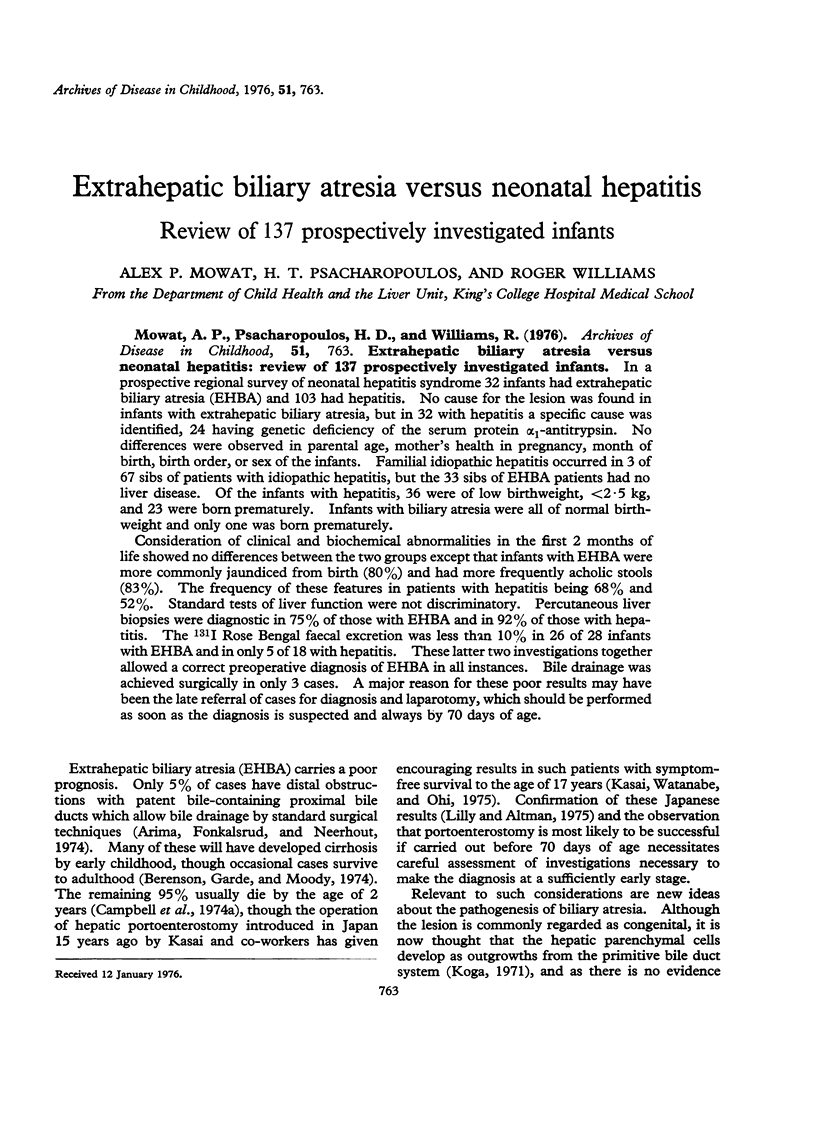
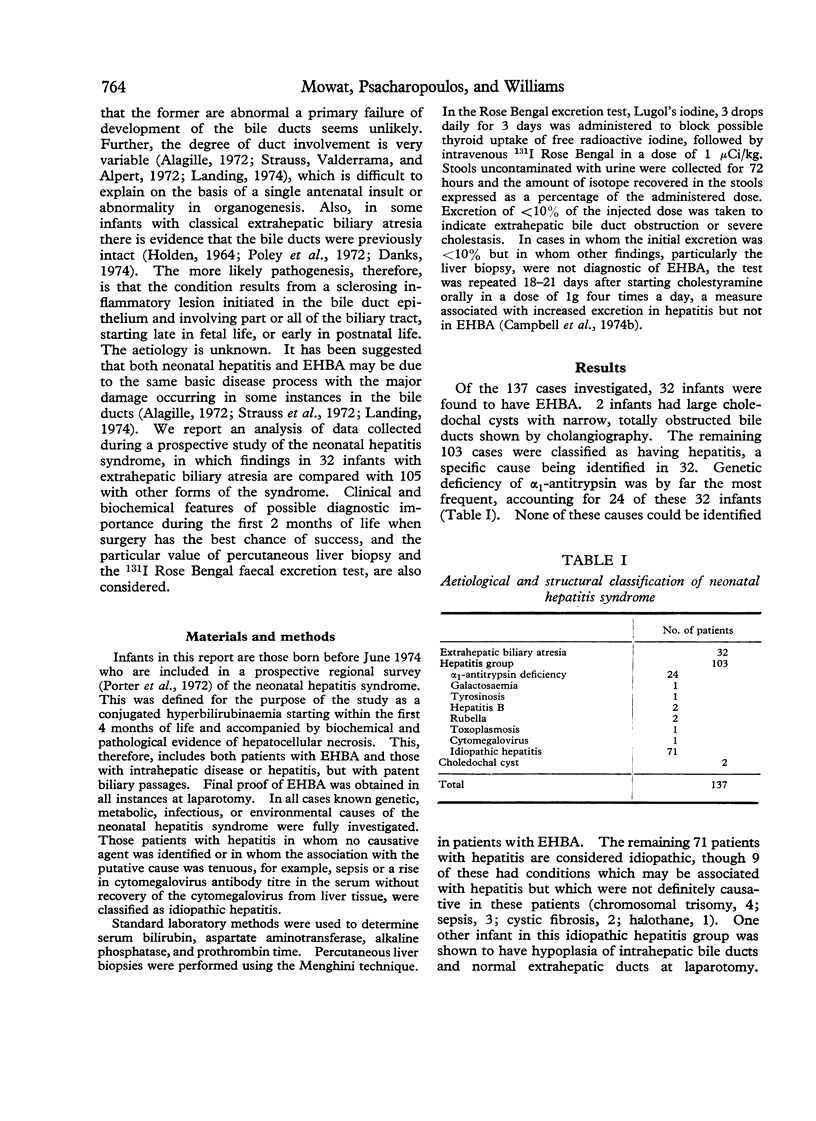
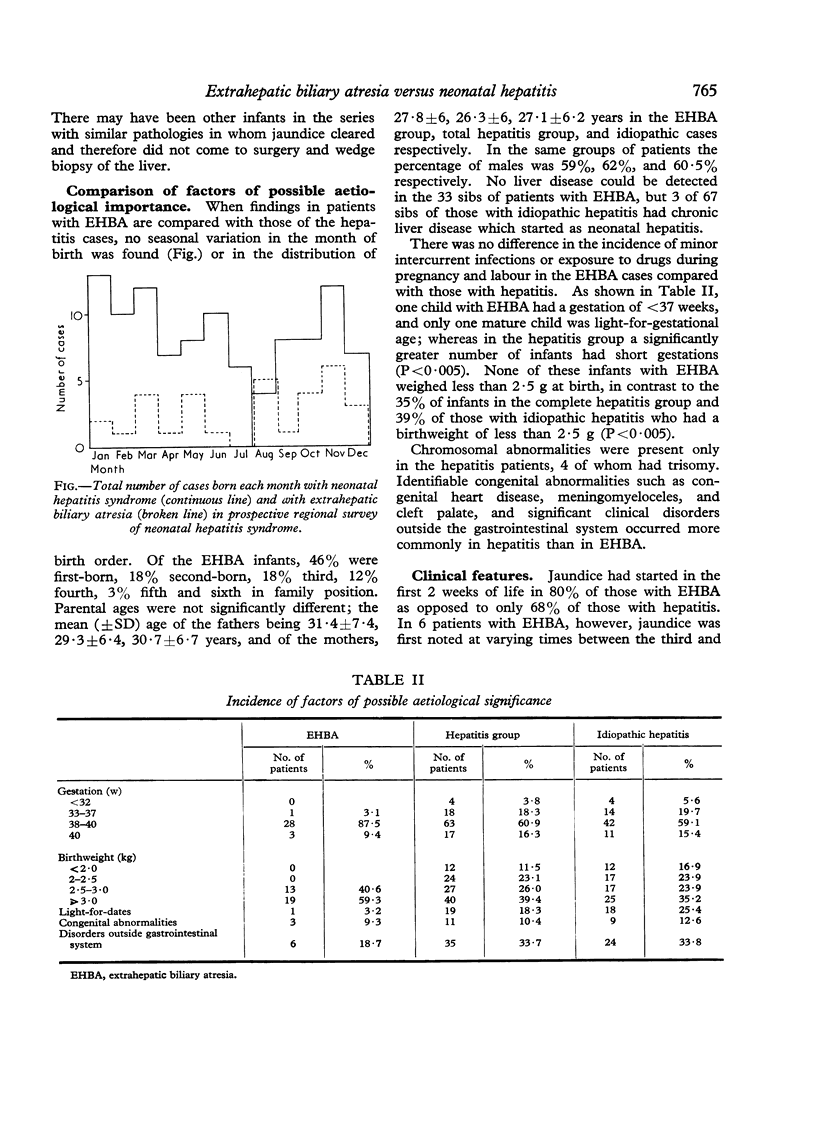
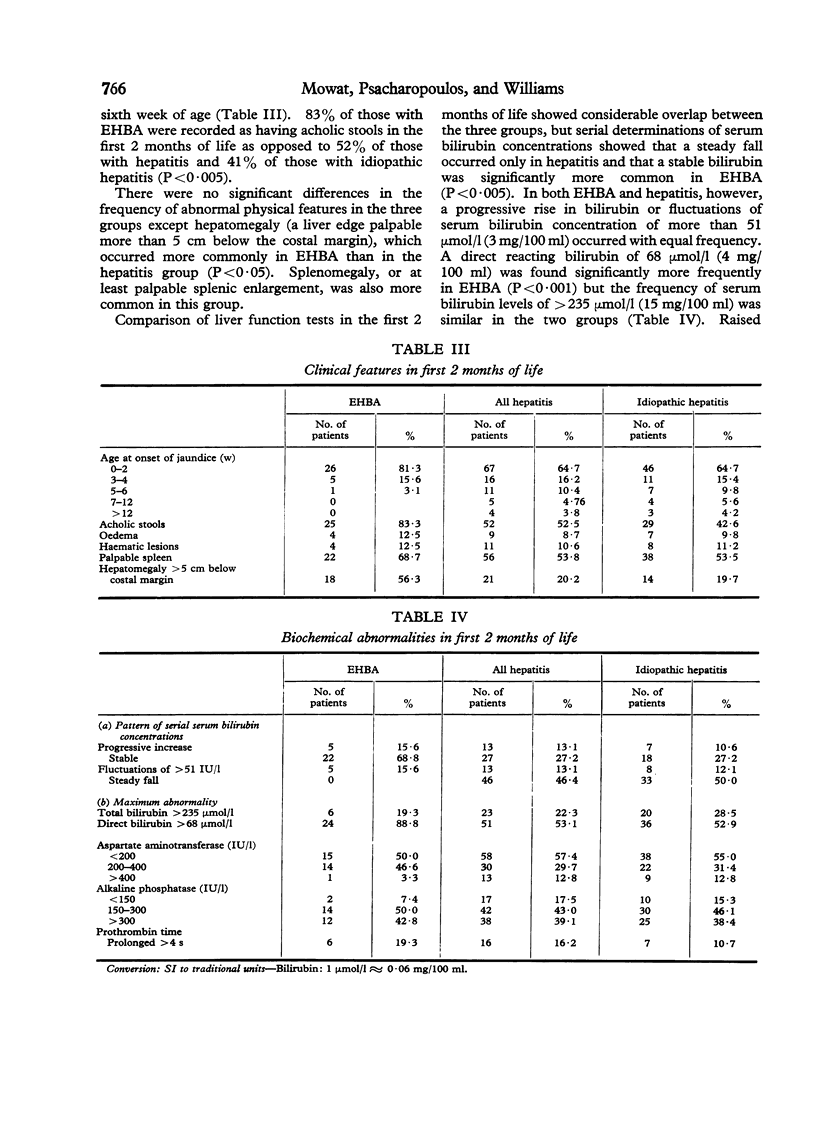
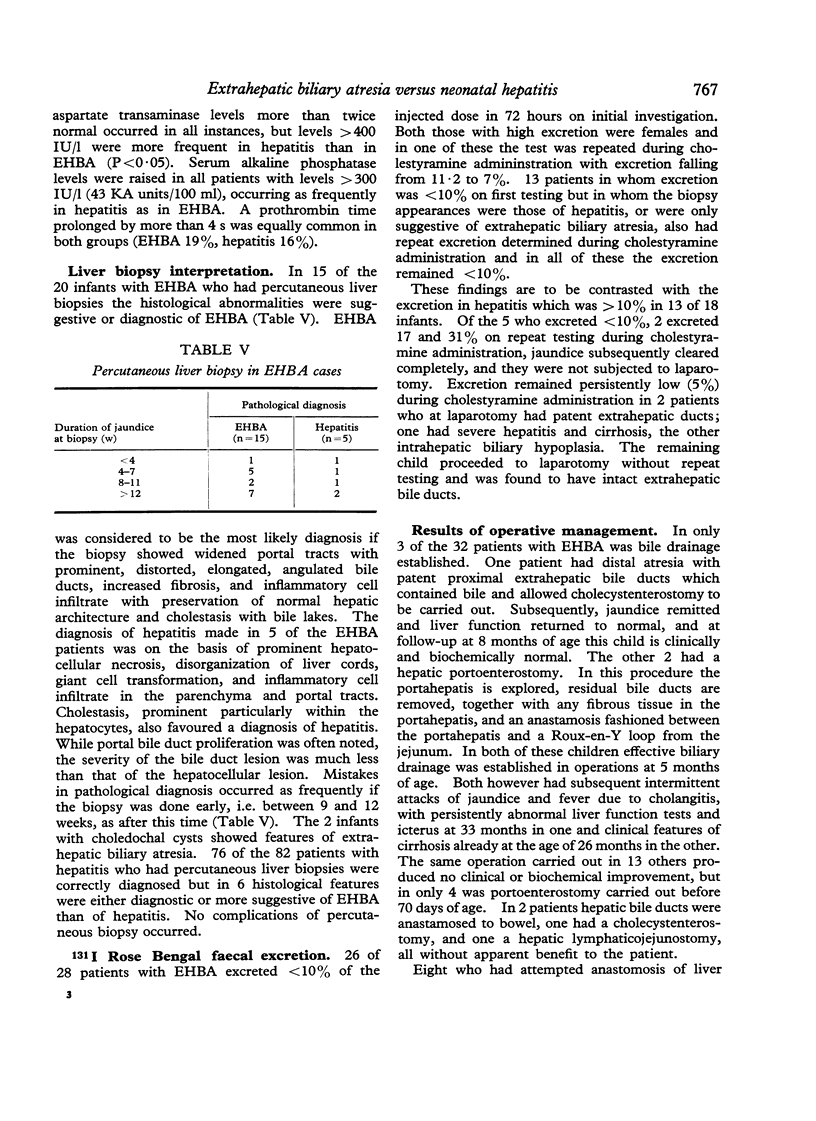
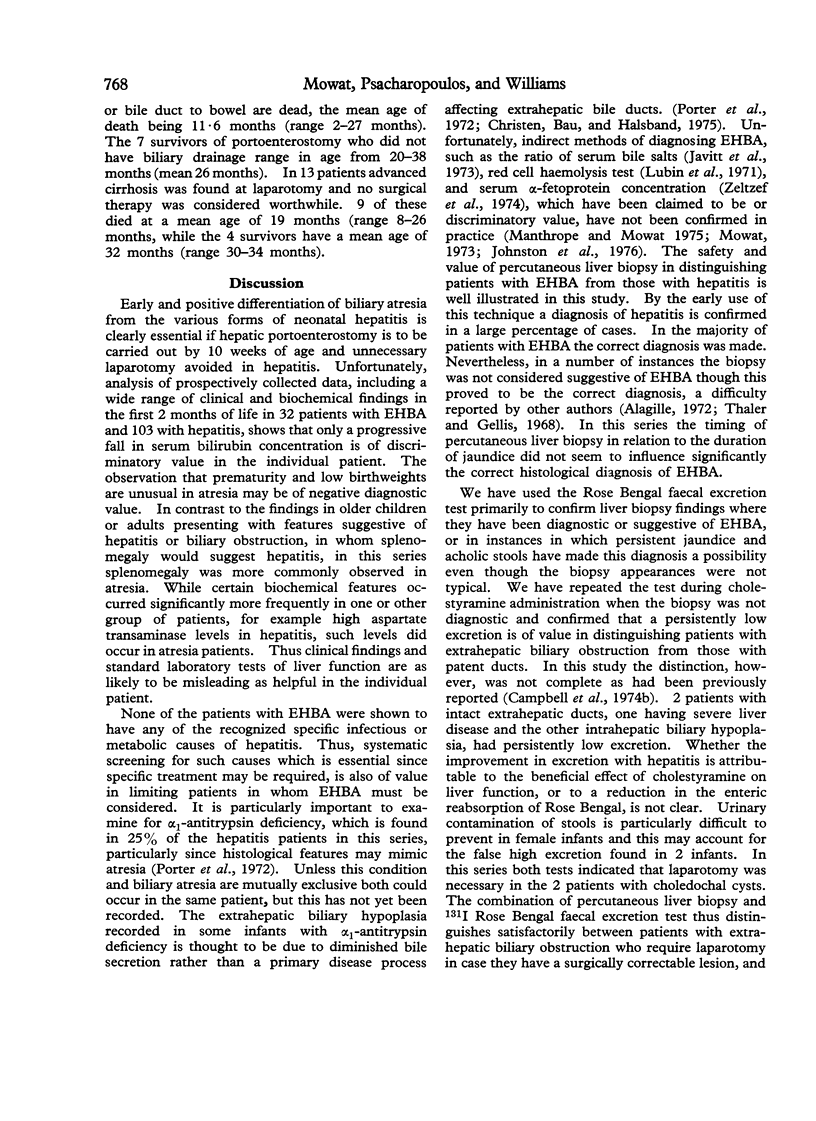
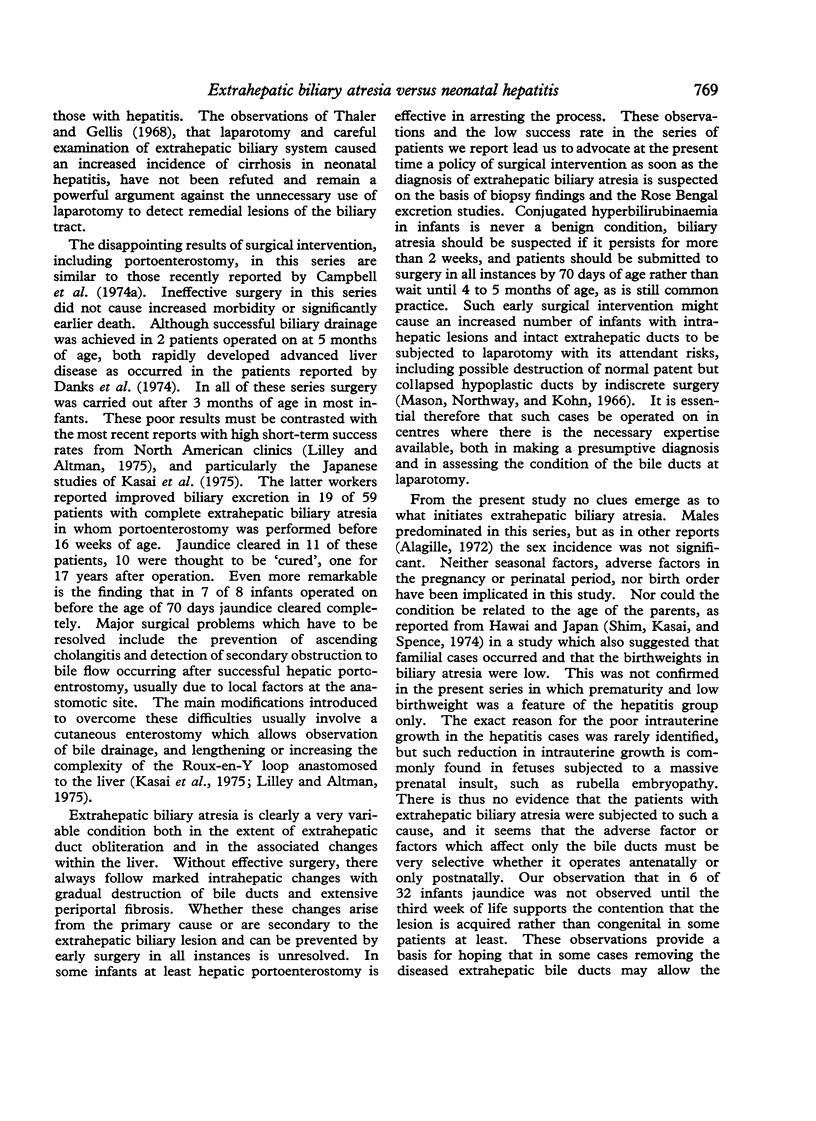
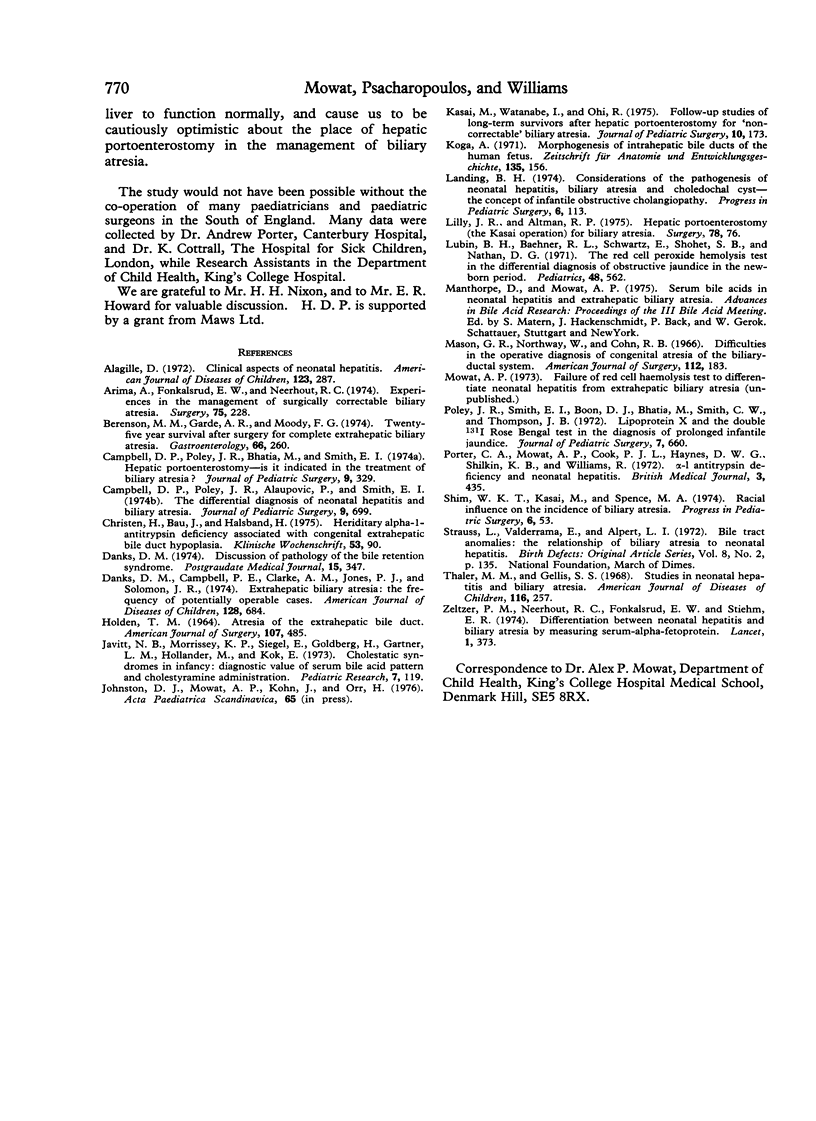
Selected References
These references are in PubMed. This may not be the complete list of references from this article.
- Alagille D. Clinical aspects of neonatal hepatitis. Am J Dis Child. 1972 Apr;123(4):287–291. doi: 10.1001/archpedi.1972.02110100019007. [DOI] [PubMed] [Google Scholar]
- Arima E., Fonkalsrud E. W., Neerhout R. C. Experience in the management of surgically correctable biliary atresia. Surgery. 1974 Feb;75(2):228–232. [PubMed] [Google Scholar]
- Berenson M. M., Garde A. R., Moody F. G. Twenty-five-year survival aftery surgery for complete extrahepatic biliary atresia. A case report. Gastroenterology. 1974 Feb;66(2):260–263. [PubMed] [Google Scholar]
- Campbell D. P., Poley J. R., Alaupovic P., Smith E. I. The differential diagnosis of neonatal hepatitis and biliary atresia. J Pediatr Surg. 1974 Oct;9(5):699–705. doi: 10.1016/0022-3468(74)90108-0. [DOI] [PubMed] [Google Scholar]
- Campbell D. P., Poley J. R., Bhatia M., Smith E. I. Hepatic portoenterostomy--is it indicated in the treatment of biliary atresia? J Pediatr Surg. 1974 Jun;9(3):329–333. doi: 10.1016/s0022-3468(74)80288-5. [DOI] [PubMed] [Google Scholar]
- Christen H., Bau J., Halsband H. Hereditary alpha1--antitrypsin deficiency associated with congenital extrahepatic bile duct hypoplasia. Klin Wochenschr. 1975 Jan 15;53(2):90–91. doi: 10.1007/BF01482714. [DOI] [PubMed] [Google Scholar]
- Danks D. M., Campbell P. E., Clarke A. M., Jones P. G., Solomon J. R. Extrahepatic biliary atresia: the frequency of potentially operable cases. Am J Dis Child. 1974 Nov;128(5):684–686. doi: 10.1001/archpedi.1974.02110300094012. [DOI] [PubMed] [Google Scholar]
- Javitt N. B., Morrissey K. P., Siegel E., Goldberg H., Gartner L. M., Hollander M., Kok E. Cholestatic syndromes in infancy: diagnostic value of serum bile acid pattern and cholestyramine administration. Pediatr Res. 1973 Mar;7(3):119–125. doi: 10.1203/00006450-197303000-00003. [DOI] [PubMed] [Google Scholar]
- Kasai M., Watanabe I., Ohi R. Follow-up studies of long term survivors after hepatic portoenterostomy for "noncorrectible" biliary atresia. J Pediatr Surg. 1975 Apr;10(2):173–182. doi: 10.1016/0022-3468(75)90275-4. [DOI] [PubMed] [Google Scholar]
- Koga A. Morphogenesis of intrahepatic bile ducts of the human fetus. Light and electron microscopic study. Z Anat Entwicklungsgesch. 1971;135(2):156–184. doi: 10.1007/BF00521108. [DOI] [PubMed] [Google Scholar]
- Landing B. H. Considerations of the pathogenesis of neonatal hepatitis, biliary atresia and choledochal cyst--the concept of infantile obstructive cholangiopathy. Prog Pediatr Surg. 1974;6:113–139. [PubMed] [Google Scholar]
- Lilly J. R., Altman R. P. Hepatic portoenterostomy (the Kasai operation) for biliary atresia. Surgery. 1975 Jul;78(1):76–86. [PubMed] [Google Scholar]
- Lubin B. H., Baehner R. L., Schwartz E., Shohet S. B., Nathan D. G. The red cell peroxide hemolysis test in the differential diagnosis of obstructive jaundice in the newborn period. Pediatrics. 1971 Oct;48(4):562–565. [PubMed] [Google Scholar]
- Mason G. R., Northway W., Cohn R. B. Difficulties in the operative diagnosis of congenital atresia of the biliary ductal system. Am J Surg. 1966 Aug;112(2):183–187. doi: 10.1016/0002-9610(66)90007-9. [DOI] [PubMed] [Google Scholar]
- Poley J. R., Smith E. I., Boon D. J., Bhatia M., Smith C. W., Thompson J. B. Lipoprotein-X and the double 131 I-rose bengal test in the diagnosis of prolonged infantile jaundice. J Pediatr Surg. 1972 Dec;7(6):660–669. doi: 10.1016/0022-3468(72)90276-x. [DOI] [PubMed] [Google Scholar]
- Porter C. A., Mowat A. P., Cook P. J., Haynes D. W., Shilkin K. B., Williams R. 1 -Antitrypsin deficiency and neonatal hepatitis. Br Med J. 1972 Aug 19;3(5824):435–439. doi: 10.1136/bmj.3.5824.435. [DOI] [PMC free article] [PubMed] [Google Scholar]
- Shim W. K., Kasai M., Spence M. A. Racial influence on the incidence of biliary atresia. Prog Pediatr Surg. 1974;6:53–62. [PubMed] [Google Scholar]
- Thaler M. M., Gellis S. S. Studies in neonatal hepatitis and biliary atresia. I. Long-term prognosis of neonatal hepatitis. Am J Dis Child. 1968 Sep;116(3):257–261. doi: 10.1001/archpedi.1968.02100020259005. [DOI] [PubMed] [Google Scholar]
- Zeltzer P. M., Neerhout R. C., Fonkalsrud E. W., Stiehm E. R. Differentiation between neonatal hepatitis and biliary atresia by measuring serum-alpha-fetoprotein. Lancet. 1974 Mar 9;1(7854):373–375. doi: 10.1016/s0140-6736(74)93146-8. [DOI] [PubMed] [Google Scholar]


